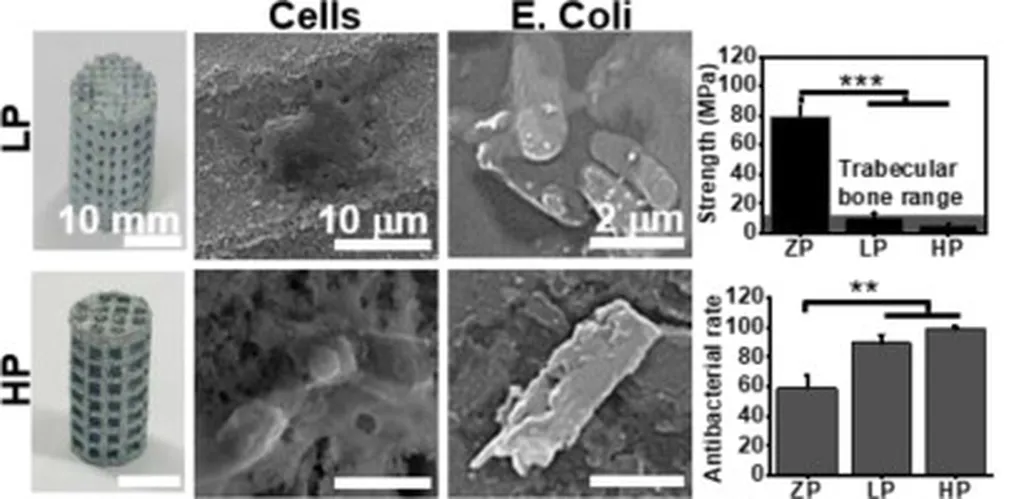In a significant stride towards advancing bone tissue engineering, researchers have developed a novel composite scaffold that combines the benefits of antibacterial properties and enhanced mechanical strength. The study, led by Dwi Fortuna Anjusa Putra from the Department of Materials Science and Engineering at the National Taiwan University of Science and Technology, introduces a silver-zinc co-doped β-tricalcium phosphate/barium titanate/collagen (Ag/Zn co-doped β-TCP/BT/COL) scaffold that shows promising results for future medical applications.
The research, published in the journal “Applied Surface Science Advances” (which translates to “Advances in Applied Surface Science”), addresses a critical limitation of β-tricalcium phosphate (β-TCP): its lack of antibacterial properties. By employing a spray pyrolysis method, the team synthesized Ag, Zn, or Ag/Zn-doped powders. These were then combined with barium titanate (BT) and collagen (COL) to create composite scaffolds using a freeze-drying technique.
The resulting Ag/Zn co-doped β-TCP/BT/COL scaffolds demonstrated exceptional antibacterial properties, effectively eliminating approximately 99.65% of Escherichia coli. Moreover, these scaffolds exhibited superior cell viability of around 94.59% when tested with MC3T3-E1 cells. “The co-doping with Ag and Zn not only imparts strong antibacterial activity but also improves the biological and mechanical performance of the scaffolds,” Putra explained.
The enhanced compressive strength and interconnected porous architecture of the Ag/Zn co-doped scaffolds make them particularly favorable for osteointegration, a process crucial for the successful integration of bone implants. This innovation could significantly impact the medical field by providing a multi-functional material that supports bone regeneration while preventing infections.
The implications of this research extend beyond medical applications. The development of such advanced materials could also influence the energy sector, particularly in areas requiring durable, high-performance materials. For instance, the enhanced mechanical properties and antibacterial characteristics could be leveraged in the design of bio-inspired materials for energy storage or conversion devices, ensuring longevity and efficiency in harsh environments.
As the demand for sustainable and high-performance materials continues to grow, the Ag/Zn co-doped β-TCP/BT/COL scaffold represents a promising avenue for future research and development. The study’s findings pave the way for further exploration into multi-functional materials that can address complex challenges in both medical and industrial sectors.
Putra’s work underscores the importance of interdisciplinary collaboration in driving innovation. By integrating knowledge from materials science, biology, and engineering, researchers can develop solutions that meet the evolving needs of various industries. The Ag/Zn co-doped β-TCP/BT/COL scaffold is a testament to the potential of such collaborative efforts, offering a glimpse into the future of advanced materials and their applications.

